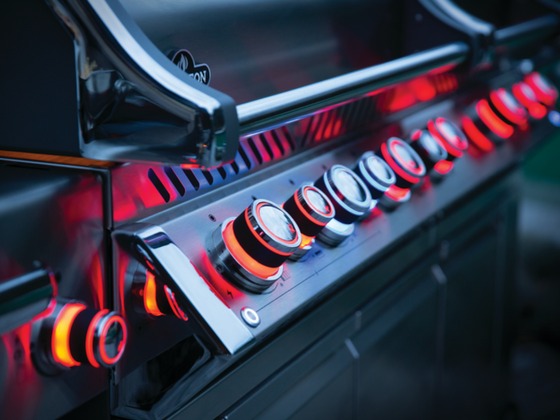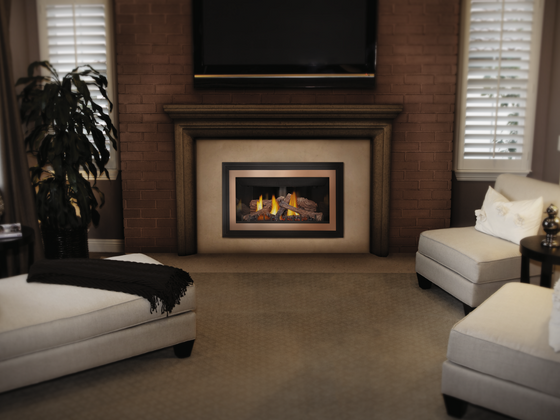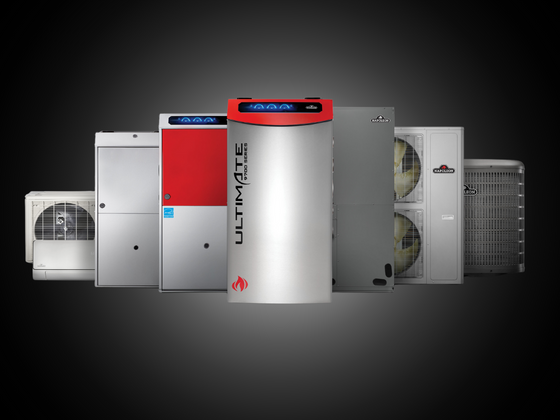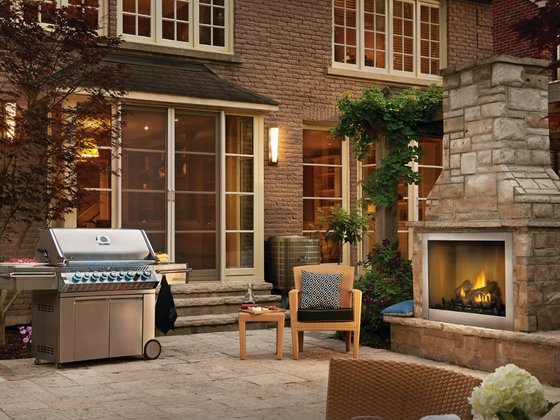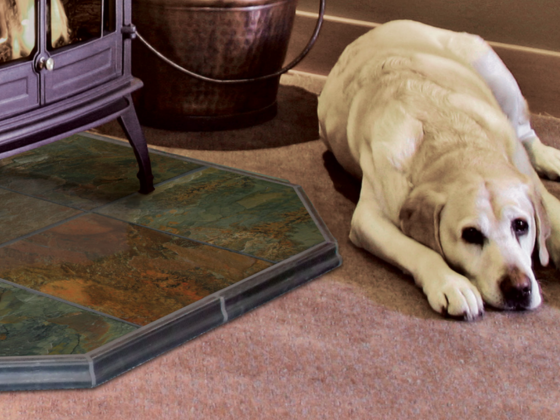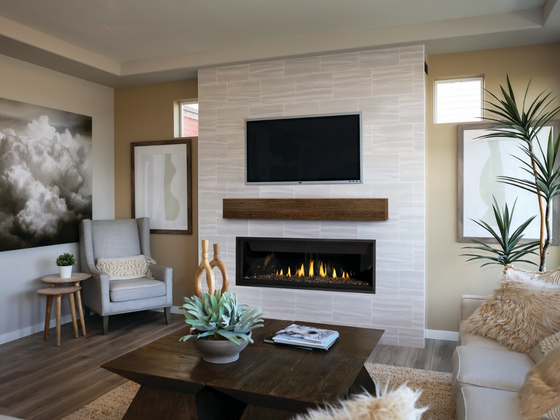FREQUENTLY ASKED QUESTIONS
GRILLS
Absolutely! Just let us know when you are purchasing your Napoleon BBQ that you would like it assembled before you pick it up!.
We do not sell conversion kits. Our Napoleon BBQs are gas specific, are certified and tested for their specific gas type and should not be modified or adjusted in any way.
Of course! If you require service, please email nhcservice@napoleon.com
We recommend covering your Napoleon BBQ to protect it from harsh elements. Our grills are an outdoor rated appliance and can withstand elements such as rain and Canadian winters.
The Napoleon group of companies manufactures products in Canada and we also have products that are made in our Napoleon manufacturing plant overseas. The overseas facility is not a third-party manufacturing center. It is owned and operated by Napoleon. The designs, manufacturing and quality control processes are all provided and strictly managed from our operations center in Ontario, Canada.
FIREPLACES
If you have an existing wood fireplace you may be looking for a gas or wood insert. Bring all dimensions of the fireplace cavity (width x height x depth) along with the depth of the lintel (the thickness of the material that crosses above the fireplace opening). Also bring photos of the fireplace inside and outside of the building.
If you do not have an existing fireplace then you may be looking for a free-standing stove. For wood stoves, measure the diameter of the wall thimble (opening into the chimney) and bring a picture of the outside chimney.
If you are looking for a freestanding gas stove, bring a picture of the preferred location along with one of that location from the outside of the house.
If you are interested in a factory-built wood burning fireplace to be built into a wall. Bring a photo of the wall where you intend to have the fireplace installed along with a photo of the outside where the venting will be located. A picture of the roof above this location would also be useful.
If you want it to heat, how large is the room (width, length and height) it is to be installed into.
Will the fireplace be installed in the basement, main or second floor.
Is the fireplace to be located flat on the wall or in a corner and will it sit at floor level or do you want a raised hearth.
For gas fireplaces stoves or inserts determined the nearest location of the gas supply in your home and the distance to the new fireplace.
Have as many photos of your home available to convey your ideas along with pictures from magazines of fireplaces you like.
Yes! All our gas fireplaces (except The Torch – GT8) incorporate a self generating millivolt system that operates independently from any outside electrical current. Only accessories such as blowers and some handheld remotes rely on house current for power and our fireplaces do perform effectively, even without them.
Vent free fireplaces are fireplaces that do not require any type of vent system. Instead, they are designed to burn clean and the combustion by-products allowed to flow into the room the fireplace is located in. Stringent requirements ensure that these fireplaces not only burn cleanly, but that they are located in rooms of sufficient size to ensure an adequate supply of fresh air is always available for the combustion process. A highly sensitive sensor is employed to turn off the gas to the fireplace should the level of oxygen within the area begin to deplete. The most obvious benefit of this type of system is that no heat is lost through the venting system making the fireplace virtually 100% efficient. Currently, these type of gas fireplaces can only be installed in some areas of the United States. They are not approved for use in Canada.
HEATING & COOLING
HEATING QUESTIONS
Napoleon Gas Furnaces are among the highest efficiency rated furnaces in the world. These efficiencies have been certified by an accredited laboratory to CSA and ANSI Test Standards and use the latest technologies to maximize the heat reclamation from the combustion process.
Think of your furnace like a brand new car. You need to have regular maintenance every 5000 km, and complete service checks at certain stages of your car’s life. Having regular maintenance will make sure that your furnace is running in top condition. More than likely if you read the fine print of your warranty, you will see this is required by the dealership to honor your warranty.
A “variable speed furnace blower” adjusts its speed according to the heat setting of the gas burner. The blowers start off on a low speed and continually ramp up until they achieve the optimum speed for the current heat setting. Conversely, they slow down once the desired room temperature has been achieved. This ensures that cold air is never circulated during the heat up and cool down cycles of the furnace while also circulating most of the heat being generated by it during those segments of the heat cycle. These blowers are also sensitive to airflow resistance that can be caused by restrictions such as a dirty air filter, which causes the blower to increase its speed to maintain the desired airflow.
There are many factors to consider when selecting the best-sized furnace for your home. Square footage and construction (insulation and windows) are the main factors but even window exposure to the sun all influence your houses potential heat loss which is why it is best to consult an expert who is trained to evaluate all these factors. Of course, if you are replacing an existing furnace, you can always use its BTU input and efficiency to help determine your needs based upon its successful ability to heat your home.
COOLING QUESTIONS
All air conditioning systems are designed and certified to work with specific indoor and outdoor units for maximum efficiency and performance. When changing from an older unit that used R22 refrigerant to a more efficient and environmentally friendly unit that uses 410 refrigerant, it is very important to change the pipes (line-set). This ensures that there is no non-condensable left in the system. This could run through the compressor and other major parts of the system and cause blockage, this may cause your system to freeze up, or possibly cause damages that is irreparable.
In most cases, yes. It is more efficient to pump dense concentrated liquid than it is with forced air. With ductless units the dense refrigerant is pumped into the evaporator, which is placed close to the ceiling. Since colder air is denser than hot air, the cold air will naturally drop allowing the air conditioner to utilize its maximum cooling capacity.
Unlike central air conditioning systems, the evaporator unit is placed in the basement above the furnace. This needs to push the cold dense air up to the second or third floor. In central systems most of the air will travel through the shortest runs creating a cold basement, a fairly cool 1st floor, and usually unsatisfactory conditions on the 2nd and 3rd floors.
No ducts to install, so no major expenses or redecorating
Two-in-one heating and air conditioning (summer and winter system)
High energy efficiency—some units have SEER (Seasonal Energy Efficiency Ratio) ratings as high as 25
Lower heating costs—a wall-mounted heat pump is cheaper to run than electric baseboards
Relatively quiet units
Option to install several units in bigger houses
All Napoleon manufactured air conditioners are made with the chlorine-free refrigerant R-410A, which is an alternative cooling agent, taking the place of R22 that is used in older models. Refrigerants are liquids that are housed within the coils of your air conditioner to cool and dehumidify your home. By using a refrigerant that is chlorine-free, Napoleon air conditioners do not contribute to ozone depletion and offer a higher SEER (seasonal energy efficiency ratio) rating. In addition, R-410A reduces power consumption and increases the durability of your compressor, extending the life of a Napoleon air conditioner considerably.

